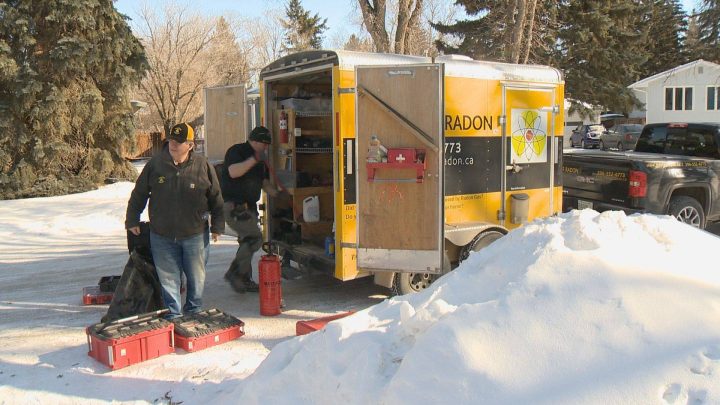The Prairies have the second-highest radon levels in the world, behind only Poland, according to new research. The story gets worse for Saskatchewan, and worse again in Regina.

The research by Evict Radon has found one in five Prairie homes, one in three Saskatchewan homes and one in two Regina homes contain dangerous amounts of the cancer-causing gas.
“It’s strongly looking like Regina is the most radon-exposed population on this planet,” said Aaron Goodarzi, lead researcher of the national Evict Radon study and the Canada research chair for radiation exposure disease.
The one in two figure is based on testing more than 500 homes in the Regina area. The average level of radon gas in a Regina home is about 200 Becquerels per cubic metre, which is Health Canada’s tolerated maximum.
Goodarzi is scheduled to present these findings at the University of Regina Tuesday and the Frances Morrison Central Library in Saskatoon Wednesday.
He’s hoping to recruit participants willing to purchase an Evict Radon long-term radon testing device and share the metrics, as well as details about their houses, such as build year and plumbing configuration.
“Every year we’ve looked, radon has gone up and up and up based on the build year of a house,” Goodarzi said.
“We have made ourselves a worsening radon problem due to something we’ve been doing.

Get weekly health news
“It does not need to be this way.”
Radon is a radioactive gas that comes from certain minerals in soil. Goodarzi said the issue is how buildings capture, contain and concentrate it.
In the 1970s, Goodarzi said one in 10 homes had “unexceptionably high levels” of radon. Now, in the Prairies, one in five homes fit that description.
Houses have become “tighter,” Goodarzi said. If fresh air isn’t getting in, houses built on soil with radon-generating minerals are likely to encounter a problem.
In large amounts, radon damages lungs and causes cancer in humans. It is recognized as the leading cause of lung cancer in non-smokers, with 10,000-40,000 Canadians diagnosed each decade.
One to three patients are diagnosed with radon-induced lung cancer in the Prairies each day, according to Goodarzi.
Goodarzi hopes to learn more about the origins of the growing radon issue. The focus on housing is an attempt to understand the confluence of factors that drive up radon levels.
The only way to know for sure whether a home has dangerously high levels is to test for them.
Frank Kirkpatrick owns Master Radon, a radon remediation business operating in the city for about 10 years.
Kirkpatrick said when he started out, the vast majority of Regina residents were unfamiliar with the dangerous gas. Now, it’s the opposite.
“It’s a serious problem with a tremendous challenge as to how we’re going to do this all quick enough as people become more understanding of this situation,” he said.
In the 1950s and 1960s, Canadian research indicated radon gas was causing lung cancer in humans. In the 1980s, the connection was made that radon gas was being concentrated in houses.
Now, radon research is picking up again.
“We have realized it is a worsening problem,” Goodarzi said. “Unless we do something about it now, we’re going to have an even bigger problem in the future.
“What I don’t want to see is kids today in houses in their 20s and 30s walking into cancer clinics to be told they have end-stage lung cancer, perhaps never having smoked in their life.”
The risk here has increased by approximately 200 per cent, Goodarzi said, while at the same time in Scandinavia, it has decreased by approximately 300 per cent.
One of the goals of his latest work is to understand what that region is or is not doing in contrast to what’s happening in Canada.
Although the Prairies seem to have higher levels of radon than elsewhere in the country, “almost everywhere in Canada, soils have radon-generating minerals,” Goodarzi said.
Levels in the British Columbia interior, Yukon and Greater Toronto Area (GTA) are “almost as high,” he said.
“This is a very Canadian problem,” he said.









Comments